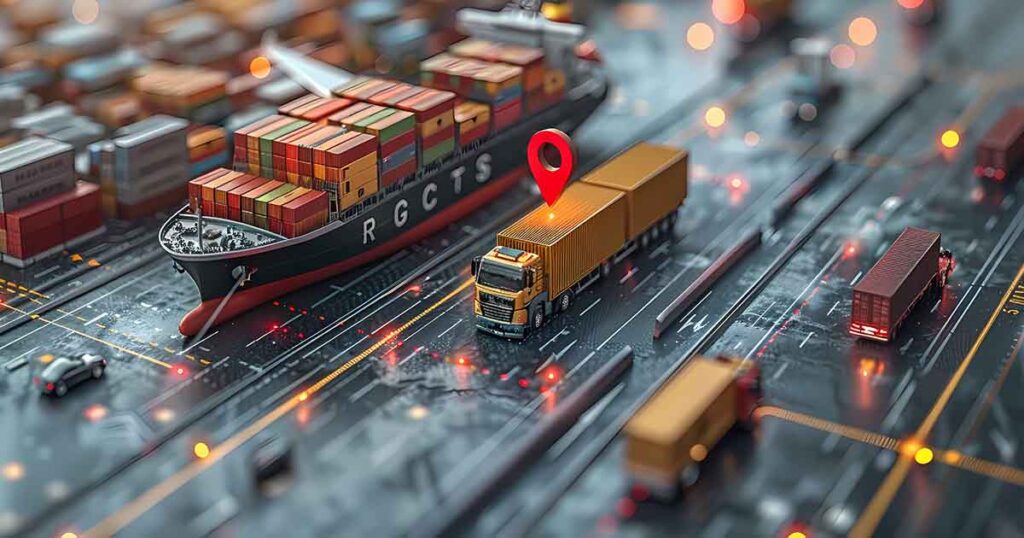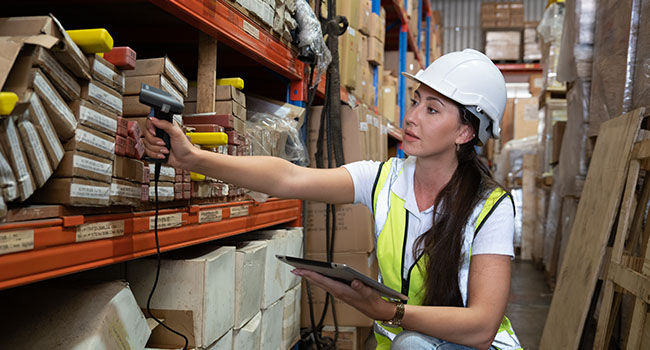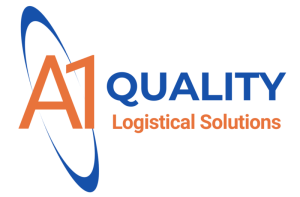A1 Quality Logistical Solutions

- By Haley
- October 3, 2024
Table of Contents
Key Highlights
- Third-party logistics (3PL) involves outsourcing logistics operations to specialized providers.
- 3PL services encompass a wide range of offerings, including warehousing, transportation, order fulfillment, and inventory management.
- Businesses can benefit from cost savings, scalability, and a focus on core competencies by employing 3PL services.
- However, challenges such as potential risks, data security considerations, and the need for clear communication must be addressed.
- The 3PL industry is constantly evolving, driven by technological advancements and the growth of e-commerce.
Introduction
In today’s connected business world, more businesses are using third-party logistics (3PL) to manage their supply chain and stay ahead of their competitors. This guide will look at what 3PL is by discussing its steps, benefits, challenges, and useful resources.
Brief introduction to 3PL and its growing importance in supply chain management
Third-party logistics (3PL) means hiring experts to handle logistics tasks like warehousing, transportation, and order fulfillment. As companies grow, managing the details of their supply chains can be hard.
3PL providers know how to manage these issues well. Their specific skills and connections help businesses improve their supply chain operations and cut costs while making things more efficient.
The rise of 3PL is due to the growing complexity of global supply chains, more online shopping, and the need for faster delivery and customized logistics solutions. By using 3PL services, businesses can improve their flow of goods, keep customers happy, and concentrate on what they do best.
What is Third-Party Logistics (3PL)?
Third-party logistics, or 3PL, means hiring outside companies to handle logistics and supply chain management tasks. This includes services like freight forwarding, warehousing, and distribution. 3PL providers have the knowledge and tools to help businesses run their operations more smoothly.
Definition of 3PL
Third-party logistics (3PL) is when companies hire outside firms, called logistics providers, to handle logistics tasks. These providers specialize in many parts of the supply chain. They offer services like warehousing, transportation, inventory management, order fulfillment, and reverse logistics.
3PL providers work as partners with businesses. They get to know the specific logistics needs of each business and customize their solutions. They use their knowledge, resources, and technology to help lower costs and improve customer satisfaction.
When businesses let 3PL providers manage logistics operations, they can save internal resources. This allows them to concentrate on their core competencies and be more competitive in the market.

Overview of 3PL services
3PL providers give a complete range of logistics services. Here are some main services that 3PLs offer:
- Warehousing and Distribution: 3PLs offer safe and efficient storage for goods. They also provide distribution services that ensure products reach customers on time.
- Inventory Management: 3PL providers use advanced systems to keep track of inventory levels, manage stock levels, and reduce waste.
- Order Fulfillment: 3PLs take care of the whole process from getting orders to picking, packing, and shipping products to customers. They use technology and efficient methods to make sure order fulfillment is accurate and timely.
The 3PL Process
The 3PL process usually starts with carefully looking at what a business needs for logistics. This includes learning about the company’s products, sales channels, customer base, and supply chain strategy.
After this analysis, the 3PL provider creates a special plan just for that business. This plan may include integrating with the company’s current systems, setting up dedicated warehouses and transportation, and using reliable tracking and reporting tools.
Step-by-step explanation of how 3PL works
- Integration and Planning: The 3PL provider works with the business’s supply chain management system to look at inventory levels, sales orders, and shipping needs. They make a full plan for warehouse operations, order processing, and transportation routes.
- Receiving and Warehousing: The 3PL gets inventory from the business’s manufacturers or suppliers. They store the goods safely in their warehouses and use advanced warehouse management systems to track inventory levels, maximize storage space, and ensure smooth picking and packing.
- Order Processing and Fulfillment: When the 3PL receives customer orders from the business’s online store or other sales channels, they start processing. This means they pick and pack the items, create shipping labels, and prepare the packages for shipping.
Warehousing and storage
3PL providers have safe and well-placed warehouse storage spaces for businesses to keep their inventory. These warehouses are made to use warehouse space effectively, making it easy to store and get goods when needed.
Many 3PL providers run top-notch fulfillment centers that use advanced technology and automation. This helps speed up order processing and cuts down handling times.
By using the warehousing and storage services of 3PL providers, businesses don’t need to invest in their own warehouse. This helps lower costs and allows companies to direct money to other important projects.
Inventory management
Effective inventory management is very important for smooth supply chain operations and meeting customer needs. 3PL providers use advanced warehouse management systems (WMS) to keep track of inventory levels, watch stock movements, and give real-time updates on inventory data.
By tracking inventory levels accurately, 3PL providers help businesses keep stock at the right levels. This cuts down on stockouts and lowers inventory holding costs. They work closely with businesses to understand demand patterns, lead times, and other key factors. This way, they ensure that the right amount of inventory is available when it is needed.
Order Fulfillment
For businesses that sell online, 3PL providers take care of the whole process of order fulfillment. This includes receiving customer orders, picking and packing products, and shipping them to the customers.
They use technology, simple processes, and strong teams to make sure orders are fulfilled accurately and on time. 3PLs that focus on ecommerce fulfillment know what online retail needs. They understand the demand for quick shipping, accurate order tracking, and smooth returns.
By outsourcing order fulfillment to 3PL providers, businesses can focus on their core business activities. They can work on product development, marketing, and customer service while leaving the complicated details of fulfillment to the experts.

Transportation and distribution
3PL providers offer many transportation services, like trucking, air freight, ocean freight, and rail freight. They help goods move quickly and effectively through the supply chain.
By working closely with logistics companies and carriers, they get good rates and find safe transportation options for their clients. 3PLs also give extra distribution services such as cross-docking, consolidation, and last-mile delivery.
Reverse logistics
Reverse logistics is about managing product returns. It is an important part of supply chain management, but many people overlook it. This part can have a big effect on customer satisfaction and how well a business runs. 3PL providers offer complete reverse logistics solutions by making the return process easier for businesses and their customers.
These providers take care of all steps. They process refunds, restock inventory, and deal with items that cannot be sold. Using efficient reverse logistics cuts down on waste, gets value back from returns, and helps the environment by lowering disposal impact.
When businesses let 3PL providers manage reverse logistics, they make their returns process better and become more competitive in the market.
Types of 3PL Providers
The 3PL industry includes many different providers with their own strengths, specializations, and business models. They help businesses by offering solutions that fit their needs. These needs could depend on things like industry, shipment volume, and where the business is located.
It’s important for businesses to understand the different types of 3PL providers. By looking closely at what each type can do well or not, businesses can make smart choices. This will help them improve their logistics operations and encourage growth.
Asset-based vs. Non-asset-based 3PL
Asset-based 3PL providers have their own warehouses, trucks, and other logistics tools. They invest in these physical assets and offer many services. They often have good control over their operations, however, their heavy assets mean they can be less flexible when market conditions change or when special needs arise.
Non-asset-based 3PLs work as middlemen. They use their connections with various logistics vendors and carriers to provide services. This way of doing business allows them to be more flexible. They can easily grow and customize their services because they have access to more resources.
Choosing between asset-based and non-asset-based 3PLs depends on what a business needs, how much risk they want to take, and their long-term plans.
Service-based 3PLs (e.g., freight forwarders, courier companies)
Service-based 3PLs, such as freight forwarders and courier companies, focus on efficient transportation services in the supply chain. This helps them deliver goods on time and saves money on shipping. These 3PLs offer many services, including order fulfillment and distribution services. They meet the different needs of many industries.
Niche 3PL providers (specializing in specific industries)
Niche 3PL providers offer logistics help for certain industries like pharmaceuticals, fashion, or automotive. Working with these niche 3PL providers can lead to better supply chain visibility, improved inventory control, and personalized transportation services. They understand what each industry needs to work better and save money.

Benefits of Using 3PL Services
Outsourcing logistics to 3PL providers has many benefits for businesses of any size. It can save costs, boost efficiency, and improve customer satisfaction. 3PL services can change how a business handles its supply chain operations, allowing it to focus on what it does best.
By using the skills, resources, and technology of 3PL providers, businesses can improve their operations, lower risks, and get ahead of the competition.
Cost efficiency
Cost efficiency is a key reason why businesses look at 3PL partnerships. When companies outsource their logistics operations, they can lower their overhead costs. 3PL providers often gain from operating at a larger scale. They can negotiate better rates with carriers and use their existing resources to save money.
By cutting transportation costs, optimizing warehousing expenses, and improving the overall supply chain efficiency, 3PL partnerships help businesses manage their resources better. This leads to an improved bottom line.
Focus on core business activities
Partnering with a 3PL provider helps businesses free up their internal resources. By outsourcing tasks like logistics, business owners can spend more time on important projects and growth areas. These include:
- Product Development: Without worrying about logistics, businesses can focus on creating new and exciting products and services that meet changing customer needs.
- Marketing and Sales: With more time and resources, businesses can create targeted marketing campaigns. They can explore new markets and work on attracting more customers.
- Customer Service: With more resources freed up, businesses can provide amazing experiences for their customers and improve customer retention.
Scalability and flexibility
The flexibility and scalability of 3PL providers are major components to consider for all kinds of businesses. 3PLs have the ability to quickly adjust to a business’s needs. They can offer extra storage space, transportation, or services when needed. This is especially helpful for companies that are growing fast or changing based on the seasons.
Moreover, 3PLs give businesses more freedom to adapt to changing market conditions. Whether a company wants to move into new areas, introduce new products, or correct unexpected issues, 3PLs can change their services to fit what the business needs.
This ability to adapt allows companies to take advantage of new chances, reduce risks, and stay ahead of the competition in changing markets without needing to overspend.
Access to technology and expertise
3PL providers spend invest heavily in new technology and systems to improve how they work. When businesses team up with a 3PL, they gain access to the latest tools like warehouse management software (WMS), transportation management systems (TMS), and advanced analytics.
Besides technology, 3PLs offer valuable knowledge about logistics and industry best practices. Their experienced staff are experts in supply chain management, optimizing transportation, controlling inventory, and strategies for order fulfillment.
With a mix of new technology and curated skills, businesses can boost their supply chain visibility. They can also make logistics processes easier and use data to make smart decisions to further their organization.

Challenges and Considerations
Outsourcing logistics operations to 3PL providers can bring many benefits. However, businesses should think about possible challenges before entering a partnership with a 3PL. It’s important to tackle these issues early by planning well, having clear communication, and knowing the risks and how to reduce them. When businesses recognize and manage possible problems, they can enjoy the advantages of 3PL while avoiding its downsides.
Potential risks of outsourcing logistics
Successfully adding lumper services to current logistics operations takes careful planning. It’s important to focus on communication and teamwork and to understand how everyone involved interacts. Businesses should start by looking closely at their needs and finding out where lumper services can improve efficiency and save money.
- Loss of Control: Relying on an outside provider for a key part of supply chain management can create worries about losing control.
- Impact on Customer Satisfaction: Any problems or delays in the 3PL provider’s work can directly affect customer satisfaction.
- Data Security and Confidentiality: When you share important business data with a 3PL provider, it’s vital to have strong security to keep that information safe and to trust them to protect it.
How to mitigate these risks
- Careful Research: Do careful research when choosing a 3PL provider. Check their experience, reputation, financial strength, and security rules.
- Open Communication: Set up clear ways to talk and build a good relationship with the 3PL provider. Share your expectations, share important information, and work together to solve any problems.
- Performance Tracking: Make key performance indicators (KPIs) to check how well the 3PL provider is doing according to the service level agreements (SLAs). Keep track of their performance regularly and make changes if needed.
Essential Resources for 3PL Management
Effectively managing 3PL partnerships means having the right tools, resources, and information. This helps optimize logistics operations, keep up with industry trends, and make smart choices.
When businesses use these important resources, they can improve how they manage 3PLs. This leads to better communication and teamwork with their providers. It also helps them get more value from their logistics partnerships.
Technology tools (e.g., TMS, WMS).
Using technology tools like Transportation Management Systems (TMS) and Warehouse Management Systems (WMS) is integral for third-party logistics (3PL) today. TMS makes transportation easier by optimizing routes and cutting costs. WMS improves warehouse work by handling inventory, orders, and storage space well. These tools give real-time data and helps to deliver items faster, provides better rates, and allows for smooth order processing.
Industry reports and guides
- Industry Reports: Reliable industry reports share important insights about market trends, competition, and new technologies in the logistics industry. These reports include data analysis, expert opinions, and future predictions to guide businesses in making smart choices.
- Market Analysis: Conduct careful market analysis to understand the 3PL field. It helps in finding potential providers and looking at their strengths and weaknesses.
- Logistics Industry Publications: Joining relevant logistics industry publications and online sources allows businesses to keep up with the latest trends, news, and best practices.
Key industry associations
- Council of Supply Chain Management Professionals (CSCMP): CSCMP is a global group for people in supply chain management. They offer education, research, and chances to network.
- Transportation Intermediaries Association (TIA): TIA looks out for the interests of transportation intermediaries, such as 3PLs and freight brokers. They promote industry standards and good practices.
- Professional Networks: Joining professional networks and going to industry events can help you connect with others. You can learn from experts and stay updated on changes in the 3PL industry.

Conclusion
In conclusion, there are many benefits to using 3PL services, such as saving money and being able to grow with ease. As businesses change, more of them will rely on 3PL providers. This will help bring new technology and ideas to the industry. To excel in logistics, it is necessary to keep up with the latest trends and use useful tools like technology and industry reports. By working with trusted 3PL providers, businesses can find new chances for growth, better efficiency, and success in today’s competitive market.
Recap of the importance of 3PL in modern supply chains
In today’s busy business world, 3PL (third-party logistics) providers play a big role in helping businesses improve their supply chains. When companies use specialized experts for logistics operations, they can make their supply chains smoother, lower costs, and improve overall operations.
3PL providers offer many services including warehousing, transportation, inventory management, order fulfillment, and reverse logistics. They have the right skills, technology, and connections to help businesses manage the tricky parts of logistics. This helps companies improve their operations and meet the changing needs of their customers.
By passing logistics operations to 3PL providers, businesses can save their internal resources. This allows them to concentrate on what they do best, which gives them an edge in the global market.
Future trends in 3PL services
The 3PL industry is constantly changing due to new technology, the rise of e-commerce, and the need for faster delivery and customized logistics. Some future trends in 3PL services are:
- More Use of Advanced Technology: 3PL providers will likely invest heavily in advanced technology. This includes artificial intelligence (AI), robotics, and the Internet of Things (IoT).
- Growth of Omnichannel Fulfillment: As e-commerce businesses add more sales channels, 3PL providers will be in demand. They will help companies provide seamless omnichannel fulfillment. This will allow businesses to match customer demands for quick and flexible delivery options.
Frequently Asked Questions
What Makes a 3PL Provider Stand Out from Competitors?
A 3PL provider sets itself apart by offering great customer service. They use advanced technology to improve their services. They create solutions that fit the needs of their clients. They can also adjust to changing market conditions. Their business model focuses on being efficient and keeping customers satisfied.
How Do 3PL Providers Ensure the Security and Safety of Goods?
3PL Providers use strong security methods. They have things like cameras, control over who can enter, and safe places to store items. To keep everything safe, they manage their inventory closely. They also do quality checks and train employees well. This helps them earn the trust of customers and keep the supply chain secure.
Can Small Businesses Benefit from 3PL Services?
Small businesses can really benefit from 3PL services. They can save money by sharing resources. These services can also help them grow. They get expert help with logistics. Plus, they can reach new markets. All of this can happen without a big upfront cost.
How Has COVID-19 Impacted the 3PL Industry?
COVID-19 showed how important it is to have flexible 3PL providers. The industry experienced many big disruptions in supply chain and logistics. This made it necessary for businesses to adapt quickly, stay strong, and come up with new ideas to keep things running smoothly for their clients.
What Are the Future Skills Required for 3PL Providers to Succeed?
Future success for 3PL providers will depend on building their workforce. This means focusing on skills like technology use, understanding data, and using automation. They also need to plan wisely and grasp global logistics trends. All these skills will help drive innovation in the industry.

Haley serves as the Marketing Manager for A1 Quality Logistical Solutions. She joined A1QLS in 2023 with her prior experience gained with GXO and XPO Logistics.
